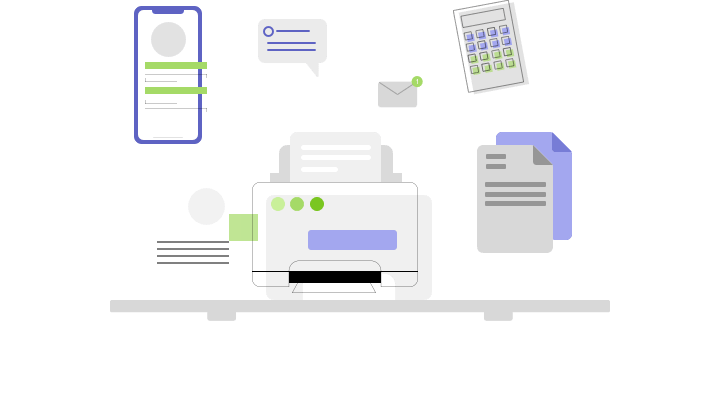
The low-effort aspect is a financial benefit when it comes to time spent. Still, it also means employees can concentrate on larger issues since the details are handled through electronic automation.Paper checks require check printing and postage, both of which are extra costs. Personnel interaction is needed for these tasks, which means less gets done or additional employees are necessary. A risk of mailing checks involves potential mail loss, or even interception of checks. All of this is gone with an EFT.When using cash, an in-person transaction is required. There’s a risk of human error in counting, fraudulent bills, and extra expense and effort for an employee to manage the money from transaction to filling the safe to in-person deposit at the bank.
Electronic Funds Transfer in Canada: EFT Payments Explained (
These processes now primarily take place over digital networks as ACH transactions. Sometimes a bank will charge a small fee—about $3—for sending an EFT to a different bank, but payroll direct deposits are generally free. As you can see, ACH transfers fall under the category of electronic funds transfers, https://www.bookstime.com/ but not all EFTs are ACH transfers. The difference is in how the money is moved and how long it takes for the receiving party to have access to it. Understanding the relationship between Automatic Clearing House (ACH) and Electronic Funds Transfer (EFT) payment methods is crucial for optimizing your business’s financial operations. While related, these terms represent different concepts—ACH is actually a type of EFT—with important distinctions in processing time, cost and functionality.
- You can also withdraw money from your Fidelity account and have it sent via a paper check that’s mailed to you or another recipient.
- The downsides of using EFT payments are that they take a little while to initially set up, take up to four business days to process, and you get charged a fee to send them.
- Direct Deposit of payroll in an employee’s bank account is another type of EFT, using ACH.
- The Federal Reserve controls wire transfers, and transactions occur on the Fedwire (Federal Reserve Wire Network).
- Direct payments can be made with your bank or credit union for sending money directly to another person or company.
- A risk of mailing checks involves potential mail loss, or even interception of checks.
How long does it take for an EFT to process?

It helps reduce failed payments by pulling funds directly from bank accounts. As EFT continues to evolve, it is important for individuals and businesses to stay informed about the latest advancements, security best practices, and available services and platforms. By embracing the benefits of EFT and utilizing secure and reputable platforms, individuals and businesses can experience seamless, secure, and efficient financial transactions in the modern digital era. These security measures, combined with ongoing advancements in technology, demonstrate the commitment of financial institutions and payment platforms to safeguarding EFT transactions. By implementing these measures, users can have confidence in the security of their funds and personal information when utilizing EFT services. In this article, we will delve deeper unearned revenue into the world of EFT, exploring its definitions, types of transactions, how it works, the benefits it offers, security measures, and popular EFT services and platforms.
Cash Flow
While both EFT payments and wire transfers are methods for electronically transferring money, they differ in key areas like cost, speed, and use cases. Understanding these differences can help businesses determine which option is best suited for their needs. EFT payments provide businesses and individuals with a secure, fast, and cost-effective way to transfer funds. While they have some drawbacks, such as potential delays for certain types of payments, the advantages outweigh the cons for many businesses.
- Your bank will either approve or deny the transaction and send that message back through the ATM network to the terminal where you requested the transaction.
- With the growing preference for digital payments, adopting EFT ensures businesses can meet modern customer expectations, reduce operational costs, and secure their financial processes.
- Most banks and financial institutions do not charge fees for basic EFT services.
- A Standard Entry Class or SEC code is a three letter code that describes how a payment was authorized by the consumer or business receiving an ACH transaction.
- In the next section, we’ll compare EFT vs Wire Transfers to help you understand when one method might be better suited for your business needs.
- This is especially important for companies managing relationships with suppliers or partners outside Canada.
- ATM transactions are initiated using a bank-issued debit card and password.
Mobile Payment Solutions

For example, if a debit card is reported as stolen by the bank doesn’t prevent a transfer from being made, the customer may be entitled to compensation. If you run a business, you’re making payments virtually all the time, whether to vendors, other businesses, utility providers, or your own employees. In the past, these types of payments were often made with cash or check. But today, electronic payments are a faster, safer, and more reliable option. Find out everything you need to know about the EFT payment process with our handy and definitive guide.
How long does an EFT take in Canada?
Department of the Treasury and the Social Security Administration (SSA). The U.S. Treasury issues stimulus payments and IRS refunds of tax payments as ACH payments. Social Security benefits and Medicare claim remittances are paid electronically using ACH/EFT transactions.
Automated Credit Scoring
Instead of waiting for a check in the mail, she receives her payment via EFT directly into her bank account within a day. Whereas a credit involves depositing, or “pushing,” funds into a bank account, for a debit, funds are withdrawn, or “pulled,” from an account. An ACH credit refers to the process of electronically depositing, or “pushing,” funds into a bank account using ACH. Electronic Checks – Sometimes called an e-check, this payment method generates a digital check as authorized by the payer. With EFTs, businesses can now streamline processes, improve cash flow, and reduce operational costs, all while ensuring secure transactions. Business leaders across industries are recognizing EFTs as more than just a convenience—they’re a strategic advantage in a fast-moving financial landscape.
- The Automated Clearing House (ACH) is a centralized U.S. network transfer that clears credit and debit transactions for payroll, vendor payments, direct deposits and recurring bill payments.
- The receiving institution reviews the instructions and credits the payee with the designated amount.
- The two most common are bank wires and electronic funds transfers (EFTs), but understanding how each of these transfer methods work and why you might choose one over the other can be challenging.
- Pre-authorized debit agreements enable businesses to set up automatic payments that are debited directly from their bank accounts, ensuring timely payment without any manual intervention.
- While wire transfers usually have higher fees than other types of EFTs, some banks or accounts offer free domestic wires.
You can make payments toward your credit card balances using EFT payments. You can also use EFT to transfer balances from one credit card to another. Apps like Cash App, PayPal and Venmo make it easy to send funds from person to person in a flash.
Problem: Lack of Flexibility in Recurring Payments
Unlike traditional banking methods that are constrained by banking hours, EFT payments are available round-the-clock. They can be processed at any time of the day, ensuring you what is an eft never have to wait for your bank to be operational to send or receive money. Electronic Fund Transfer refers to any payment process that happens digitally, eliminating the need for cheques, drafts or cash exchanges. One of the reasons why EFT is so popular is that it covers various types of financial transactions, including salary payments, utility bill payments and online shopping transactions. Fidelity doesn’t charge a fee for sending or receiving EFTs, but the receiving bank may charge a fee.